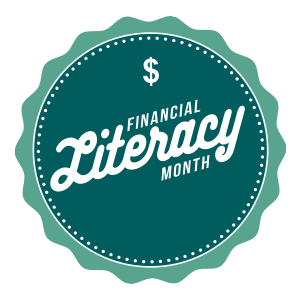

Play money that converts to a real $500 is the hook that attracts students from a few Michigan high schools to an extended financial literacy course designed and hosted by a local financial advisory firm.

“This isn’t totally altruistic,” said James Gray, chief strategy officer at Greenleaf Trust. The firm hopes to seed a crop of college students (some supported by firm scholarships) majoring in finance and investing whom it can then bring in as interns and hopefully, new hires.
High school financial literacy courses are finally at the tipping point: Currently, 23 states require that students take a personal finance class before they graduate. That’s actually better than it looks, said Tim Ranzetta, co-founder of Next Gen Personal Finance, a nonprofit that over the past three years has trained 15,000 teachers in personal finance curriculum and instructional methods. He noted that 71% of high school students attend schools that offer personal finance as an elective or requirement.
Now the advisory profession must rise to the occasion it helped stage. With an assist from nonprofits, curricula abound. High schools are quickly figuring out how to arm math, business and social studies teachers with financial literacy facts and exercises. What schools now need from advisors are professional presence and programs that make money relevant to teenagers, said advisors and consultants.
Greenleaf is located in Kalamazoo, Michigan, the locus of The Kalamazoo Promise, a regional educational and social support program that helps lift students from underrepresented communities into and through college. The civic pride crystallized in the Promise sparks spinoffs, like Greenleaf’s Wealth Development program.
Staff at The Kalamazoo Promise helped Gray scope out his idea and connected him with interested schools. The firm pays one teacher at each participating school a stipend equivalent to what sports coaches receive to recruit students and serve as the school liaison.
The two staffers hired by the firm to run the Greenleaf Wealth Development Club do the heavy lifting, which includes arranging for plenty of snacks and lots of interactive budgeting, financial planning and investing exercises. Amari Smith, one of the program staffers and a recent graduate of Western Michigan University, said the job lets her pursue a long-held interest in financial literacy while acclimating to the profession and the firm.
“There’s a wide understanding that there’s a lack of financial literacy,” Smith said. “And educators themselves lack this knowledge.”
No kidding. More than half — 52% — of the teens who took a comprehensive financial literacy quiz in January flunked, according to the National Financial Educators Council. Teachers are enthusiastic about adding financial literacy to their repertoire because they themselves need to learn how to better manage their own finances, Ranzetta said.
The current wisdom is that the second half of high school is the sweet spot for financial literacy because students’ post-graduation futures, careers and financial decisions are imminent.
“There are so many decisions that are coming fast and furious,” Ranzetta said. “Do you have a savings and checking account? How do you do all the new employee paperwork? How much does it really cost to have a car? And all the college decisions. There are so many milestones that are chances to teach kids.”
With curriculum and materials well-established, financial services professionals can best help by layering in real-life experiences.
The Council for Economic Education has been instrumental in establishing national standards for personal finance education in K–12 schools and in providing material, professional development and community for personal finance teachers. What high school teachers need is not more technical help with material, but financial services professionals willing to share with students how money plays out in real life, said Christopher Caltabiano, chief program officer at the council.
“A high school kid doesn’t care about your acronyms. They care about your story,” he said. “Don’t write a financial literacy book. We don’t need more content and we don’t need more content from someone who has a very solid understanding of the material but no understanding of how to deliver that content in a classroom setting.”
The more personal the stories, the greater the impact, Caltabiano said. “Everyone comes from somewhere,” he said, underscoring the importance of origin stories. “When a CEO gets up there and says, ‘I didn’t know what I wanted to do when I got out of college and I floundered and then I figured it out and now here I am,’ that resonates. Bring some modesty and honesty to your background. ”
It doesn’t get much more relevant than the Greenleaf program. Students sign up with their friends, get to pepper Greenleaf staff with questions about what their jobs entail, and compete for prizes. “It’s activities — not teaching, but giving them a space to implement this stuff in a controlled environment,” Smith said.
The program provides investing training wheels so that they can take the wheel of their own $500 accounts. Investing is introduced a few sessions into the program, once students have gained an overview of how markets work and what investors (and advisors) do.
They set up model portfolios in a simulator and then apply what they learn in subsequent sessions to their investing decisions. When the program concludes, they are handed control, and the consequences of their risk and reward analysis and strategies.
Meanwhile, advisors and investment professionals continue to press for formal adoption of financial literacy classes at the state and local level. While school administrators are wary of state dictates that are unaccompanied by corresponding funds, financial literacy appears to occupy a rare island of bipartisan support.
Currently, 21 states have bills in the works to expand financial literacy requirements. “Tell legislators what you’re hearing from clients and what clients tell you about their kids,” Ranzetta said.
Steve Lear is knee-deep in advocating for literacy requirements in his home state of Minnesota. The founding partner of advisory firm Affiance Financial, he also launched the Financial Literacy Coalition of Minnesota, partnering with insurers, accountants and realty agents to support the Minnesota Council on Economic Education and show state legislators that his alliance means business.
“This has been rummaging around in Minnesota for five, six years, and nobody was taking it seriously because nobody was behind it,” Lear said. “I have had nobody say that this is a bad idea. The concern from legislators is that the legislators don’t want to turn to the Department of Education and say, ‘You’ve got more requirements.” They’d prefer that the Department of Education and teachers turn to the legislators and say, ‘This is what the kids need to know.’”
The time is long overdue for all players in financial services to rally a coordinated effort to first win legislative support for financial literacy and then to follow through with money for innovative approaches and grassroots programs, he argued.
“We make a lot of money,” Lear said of the financial advisory profession. “The financial service industry needed to step up, not just in words, but in dollars. With action.”
(As previously reported in InvestmentNews, education policy is set at the state and local level. Follow the progress of financial literacy requirements through the Council for Economic Education and through the National Conference of State Legislatures.)

The 25-year industry veteran previously in charge of the Wall Street bank's advisor recruitment efforts is now fulfilling a similar role at a rival firm.

Former Northwestern Mutual advisors join firm for independence.

Executives from LPL Financial, Cresset Partners hired for key roles.

Geopolitical tension has been managed well by the markets.

December cut is still a possiblity.
Streamline your outreach with Aidentified's AI-driven solutions
This season’s market volatility: Positioning for rate relief, income growth and the AI rebound
